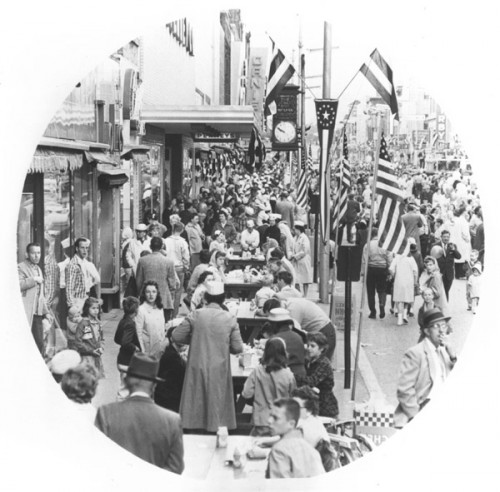Bowls, Belts, and Flakes: Performance as Historical Research
[flickr id=”6232937892″ thumbnail=”medium” overlay=”true” size=”original” group=”” align=”none”]
After covering Thesis Critique Week in my last post, I realized that I have been forgetting someone in my writing and reviewing of work–myself. Wait. Before you roll your eyes, close the window, and go check your email, hear me out. In my first post, I introduced myself and quickly went into describing InterArts and the developing fall semester. That is my job, granted. But, you may be asking, who really is this Mike St. John? What kind of work does he do? How does he fit into the InterArts program?
Let me take the time to describe some of my latest work. In a word, it’s all about cereal.
I was born and raised in Battle Creek, Michigan, the cereal capital of the world. It was here that the Kellogg brothers created the first corn flake, and the entire notion of breakfast–bread mash and fried meats in the early 1900’s–changed forever. A cereal industry exploded from B.C. then, and one of the Kellogg brothers (the younger, William Keith, or W.K.) led the charge in spreading breakfast cereals across the globe.
The histories of food, industry, and place are complex topics that connect in my hometown. Researching their relationships to one another through performance has been a rich area to explore for my work in InterArts (especially Thesis). A case in point would be my performance installation piece The World’s Longest Breakfast Table.
[flickr id=”6232416345″ thumbnail=”medium” overlay=”true” size=”original” group=”” align=”none”]
Kellogg’s sponsors the actual World’s Longest Breakfast Table every summer in Battle Creek. It is a ritual where the families of the city, and beyond, come to have a free breakfast downtown (the black-and-white photo above is from the inaugural Breakfast Table in 1956). For my work, I wanted to recreate the feeling of being in Battle Creek by staging my own World’s Longest Breakfast Table in a theatrical space.
Participants could sit down at my table and have a bowl of cereal while I performed as two personas. The first was the Server, where I poured milk for everyone’s cereal and described one version of history in Battle Creek–a corporate take of Kellogg’s involvement with the city. The second was the Midwesterner, an exaggerated version of myself who sat with the participants and described the dire times in Michigan–statewide job loss, economic turmoil, and outsourcing of factory jobs. There is a silver lining though. The World’s Longest Breakfast Table is still here, and it can bring people together to figure out how we can discuss the future.
[flickr id=”6232414695″ thumbnail=”medium” overlay=”true” size=”original” group=”” align=”none”]
Performance is an artistic tool that can dig out the past and enliven it for the public (…because, really, when was the last time a history textbook moved you?). Right now, my work has led to the recreation of factory equipment in the cereal industry. The performance work is studying how a human body interacts with these machines, and how much they can mirror one another. For example…
Like cereal, history can move in a linear fashion, as if on a conveyor belt. Or it can branch off into an infinity of directions (…like cereal as well…), influencing landscapes, identities, cultures, and futures. The hope for my work is that it inspires a looking-back-to-look-forward approach in assessing the foods and histories we take into our bodies.
The writer T.C. Boyle asked himself the question, why do we, in America and around the world, eat cereal every morning? That question led the research for his great historical satire on Battle Creek, The Road to Wellville. We research to find answers, and we make art to express those answers in powerful, immediate ways for everyone else. As artists, we serve the public a version of the world.
And in my version? The world is bittersweet and served best with milk.

